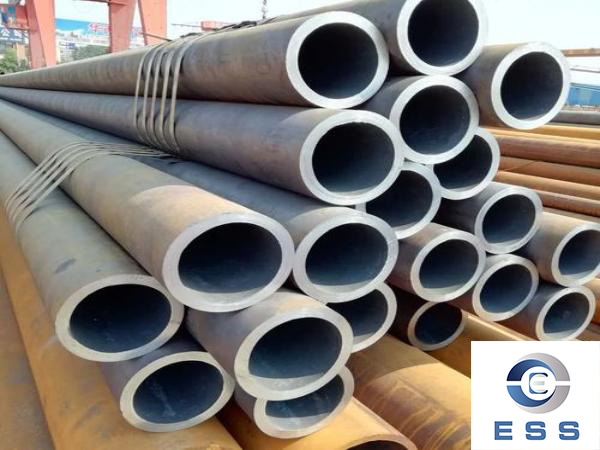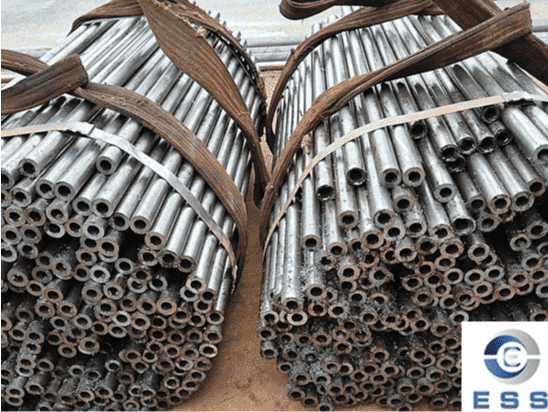How to avoid bubbles when burning
carbon steel pipes with argon arc welding

Carbon steel pipes can be divided into hot-rolled and cold-rolled (drawn) types. Hot-rolled carbon steel pipes are suitable for manufacturing general steel pipes, low- and medium-pressure
boiler tube, high-pressure boiler steel pipes, alloy steel pipes,
stainless steel pipes, petroleum cracking pipes, geological steel pipes, etc., while cold-rolled (drawn) carbon steel pipes include carbon thin-walled steel pipes, alloy thin-walled steel pipes, stainless thin-walled steel pipes, special-shaped steel pipes, etc.
Why bubbles appear when burning carbon steel pipes with argon arc welding
The appearance of bubbles is a common phenomenon in the process of burning carbon steel pipes with argon arc welding. This is mainly because there are attachments or impurities inside the pipe, and high temperatures are generated during argon arc welding, which causes these impurities to evaporate and form bubbles.
How to avoid bubbles when burning carbon steel pipes with argon arc welding
1. Clean the pipe
Before welding, the carbon steel pipe needs to be thoroughly cleaned to remove attachments, impurities and grease. The purification process must be thorough to ensure the purity of the surface of the welding area. Bubbles will form on surfaces that have not been purified or are not thoroughly purified, affecting the quality of welding. This can be achieved by cleaning with a wire brush or detergent.
2. Carefully adjust the current
The size of the current has a great influence on the quality of welding. If the current is too large, it will burn through the pipe, and if the current is too small, it will cause bubbles to appear. Therefore, the size of the current needs to be carefully considered.
3. Correct welding technology
The correct welding technology can effectively reduce the generation of bubbles. Welders need to master the correct welding posture and operating skills, ensure the position and angle of the electrode or electrode during welding, and ensure that the welding speed and current are stable. Too fast or too slow welding speed will cause bubbles to appear. Therefore, it is necessary to reasonably adjust the welding speed to avoid bubbles to ensure the quality of the weld.
4. Choose the right welding material
Before welding, it is necessary to ensure that the equipment and materials are of good quality. Some parameters, such as welding material size, hardness, composition, etc., need to be considered carefully. Using high-quality argon gas and electrodes can reduce the generation of bubbles. At the same time, using the right current and voltage can also reduce the possibility of bubble generation.
5. Check the welding quality
After welding is completed, the welding quality needs to be checked. If bubbles or other quality problems are found, they need to be repaired in time. Poor welding quality will cause bubbles and other problems, affecting the quality of the weld.
6. Control welding speed and welding temperature
Welding speed and temperature play an important role in welding quality. Welding speed that is too fast or temperature that is too high will lead to problems such as insufficient argon, aeration and bubbles. Therefore, it is necessary to control the welding speed and temperature according to the material thickness and the length of the weld to avoid the generation of bubbles.
How to deal with bubbles that have already appeared
If bubbles appear during the welding process, they need to be dealt with in a timely manner. The methods include the following:
1. Melting reflow: melt the bubbles with welding rods or gas welders, and then reflow the metal.
2. Punching and degassing: punch holes at the bubbles to let the gas escape, and then continue welding.
3. Welding repair: cut off the bubbles in the weld, and then repair with welding rods. The above methods need to be used flexibly according to the actual situation to ensure the quality of welding.
Conclusion
Avoiding bubbles when argon arc welding carbon steel pipes requires attention to a series of factors, such as cleaning the pipeline, carefully adjusting the current, correct welding technology, reasonably adjusting the welding speed temperature and choosing the right welding materials. Through the above methods, you can successfully avoid the appearance of bubbles and make the welding quality more stable and reliable.
Read more: Roughness of carbon steel pipe













 Eastern Steel Manufacturing Co.,Ltd not only improve product production and sales services, but also provide additional value-added services. As long as you need, we can complete your specific needs together.
Eastern Steel Manufacturing Co.,Ltd not only improve product production and sales services, but also provide additional value-added services. As long as you need, we can complete your specific needs together.










